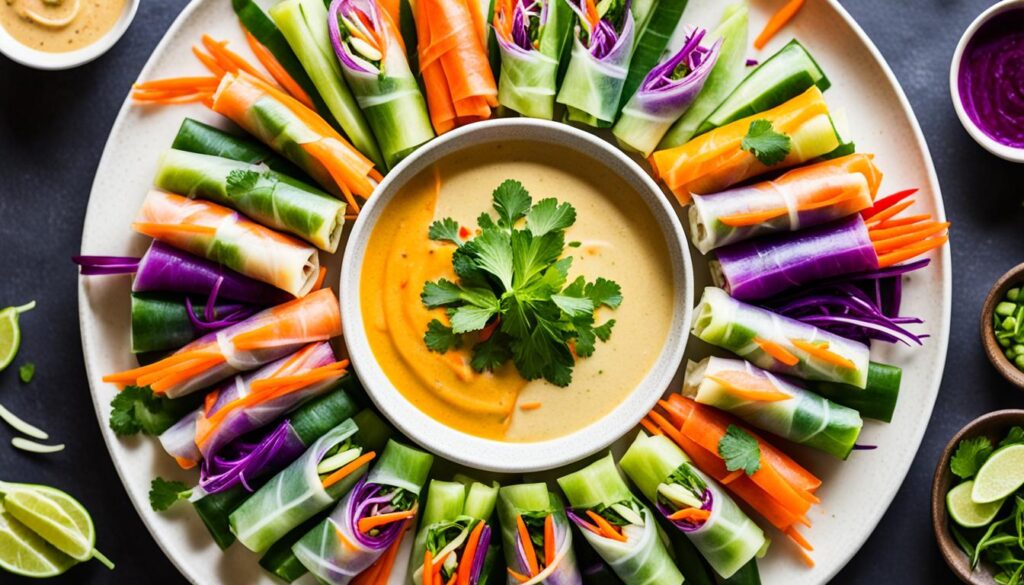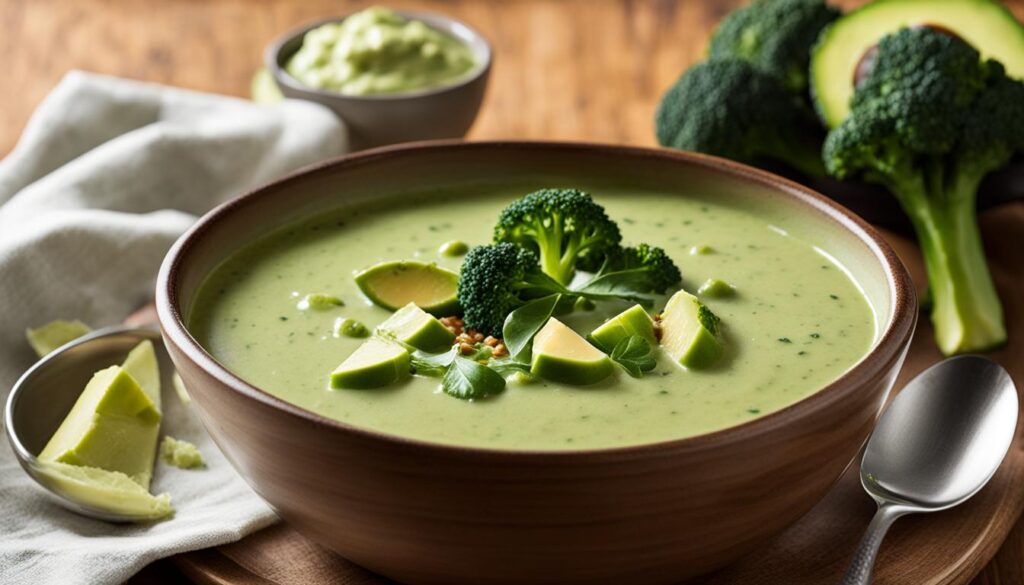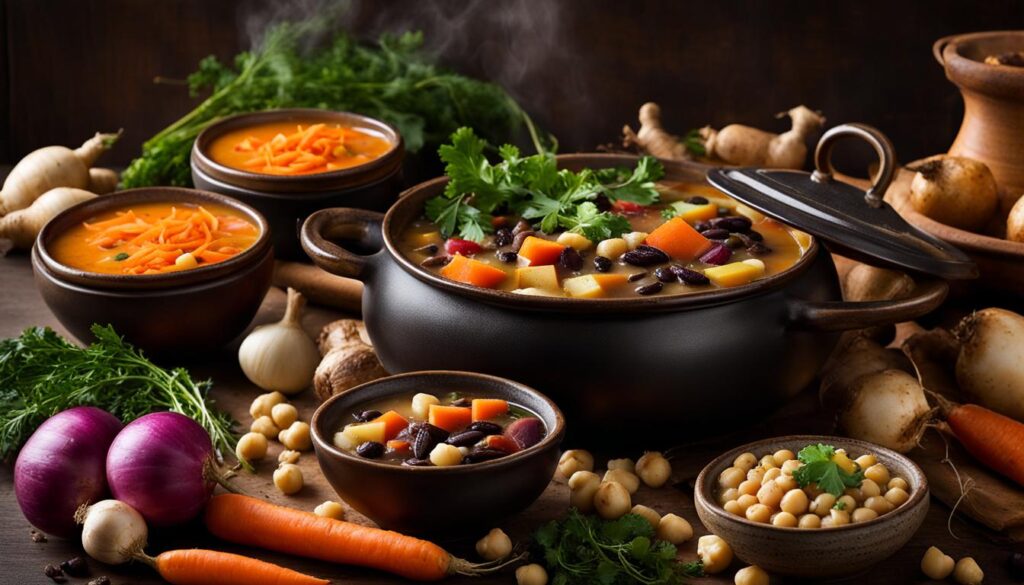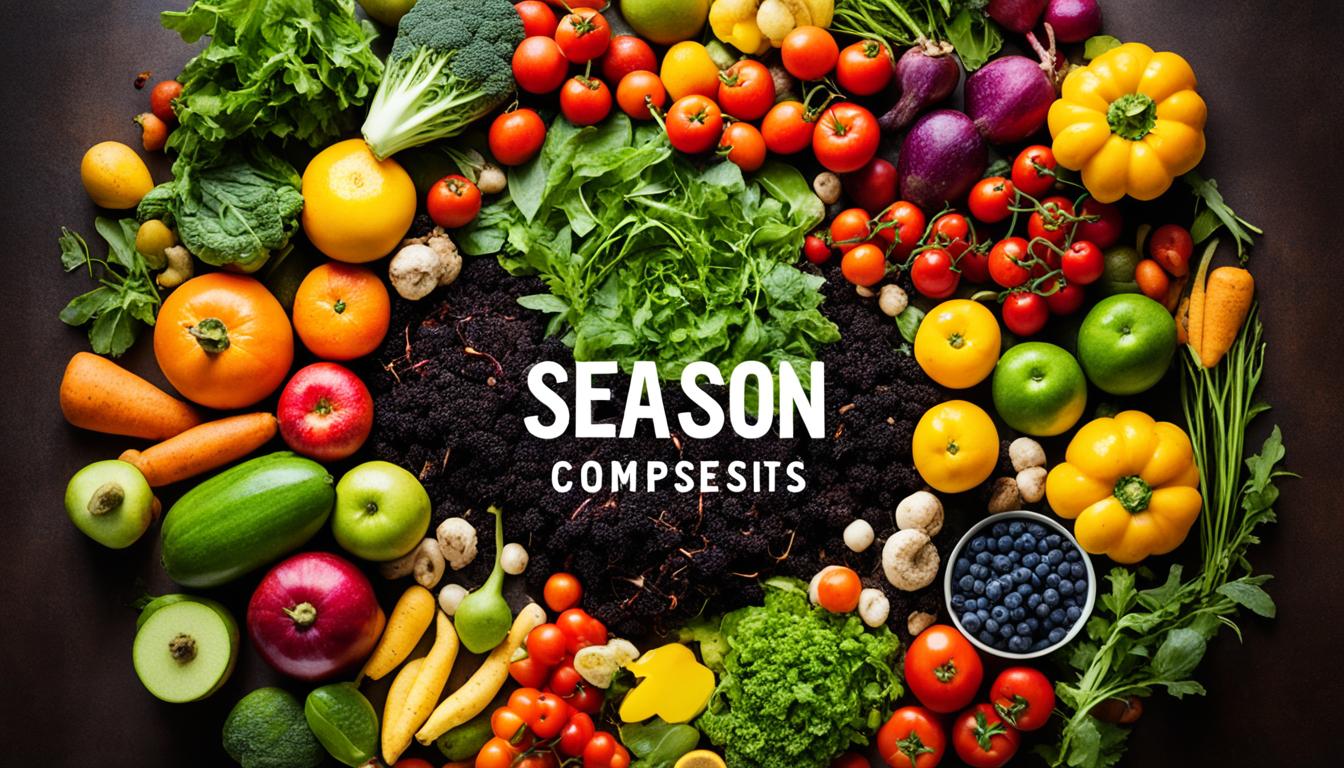Earth Month is a time to raise awareness for important global environmental issues. It is a reminder that every choice we make can have an impact on the planet. One area where we can make a positive change is in our food choices. By embracing sustainable eating, we can not only improve our own health but also contribute to a healthier planet.
Sustainable eating focuses on reducing our carbon footprint, conserving natural resources, and supporting ethical and eco-friendly practices throughout the food system. It means choosing foods that are locally sourced, seasonal, and organic whenever possible. It also means reducing food waste, supporting local farmers and producers, and opting for plant-based options more often.
Eco-friendly recipes play a crucial role in sustainable eating. They are not only delicious but also designed to be environmentally conscious. From plant-based meals to creative uses of local and seasonal ingredients, these recipes inspire us to make healthier and more sustainable choices in the kitchen.
Key Takeaways:
- Sustainable eating is a way to reduce our environmental impact while improving our health.
- Choosing locally sourced, seasonal, and organic foods supports sustainable eating.
- Eco-friendly recipes offer delicious and environmentally conscious options for our meals.
- By embracing sustainable eating, we can contribute to a healthier planet for future generations.
- Small changes in our food choices can have a big impact on the environment.
Rainbow Veggie Spring Rolls with Peanut Sauce
These colorful spring rolls are filled with vibrant vegetables and served with a delicious peanut sauce. Created by Amanda Hernandez, MS, RDN, this recipe is a great way to incorporate plant-based foods into your diet.
Spring rolls are a versatile and nutritious dish that can be enjoyed as an appetizer or a light meal. They are packed with fresh and crisp vegetables, providing a rainbow of colors on your plate. By choosing locally sourced and organic vegetables, you can contribute to sustainable eating practices that promote a healthier planet.
“These rainbow veggie spring rolls are not only visually appealing but also a delightful combination of flavors,” says Amanda Hernandez. “They are an excellent way to introduce more vegetables into your diet while savoring a delicious meal.”
To make these vibrant spring rolls, simply follow Amanda’s recipe:
- Prepare a variety of colorful vegetables such as carrots, bell peppers, cucumbers, and purple cabbage.
- Julienne or thinly slice the vegetables to create thin strips.
- Soak the rice paper wrappers in warm water until soft.
- Place the softened wrapper on a clean surface and add a small handful of the julienned vegetables.
- Roll the wrapper tightly, folding in the sides as you go.
- Repeat the process with the remaining wrappers and vegetables.
The peanut sauce adds a creamy and savory element to the spring rolls. It can be made by combining peanut butter, soy sauce, lime juice, garlic, and a touch of sweetness like honey or maple syrup. Adjust the ingredients according to your taste preferences and enjoy dipping your rainbow veggie spring rolls into this flavorful sauce.
This recipe is not only delicious but also aligns with sustainable eating practices. By incorporating more plant-based foods into your diet, you can reduce your carbon footprint and contribute to a healthier planet for future generations.

Turmeric and Cumin Infused Veggies
Gauri Junnarkar Chaudhuri, RDN, Ayur Nutrition, shares this delightful recipe for turmeric and cumin infused veggies. Incorporating turmeric into your dishes not only adds a burst of flavor but also enhances both taste and health benefits. Turmeric is well-known for its anti-inflammatory properties, making it a fantastic ingredient for a nourishing and sustainable meal.
“Adding turmeric to your meals is a simple yet powerful way to support your well-being. Its vibrant color and earthy flavor can transform a plain vegetable dish into a culinary delight,” says Gauri Junnarkar Chaudhuri, RDN. “By embracing sustainable eating habits and incorporating ingredients like turmeric and cumin into our recipes, we can enjoy delicious meals while making a positive impact on our planet.”
Try this recipe for turmeric and cumin infused veggies:
- 1 tablespoon olive oil
- 2 teaspoons ground turmeric
- 1 teaspoon ground cumin
- 4 cups assorted vegetables (such as bell peppers, zucchini, and broccoli), sliced
- Salt and pepper to taste
Instructions:
- In a large skillet, heat the olive oil over medium heat.
- Add the ground turmeric and cumin to the skillet, and cook for about 1 minute until fragrant.
- Add the sliced vegetables to the skillet, and sauté until they are tender-crisp, about 5-7 minutes.
- Season with salt and pepper to taste.
- Remove from heat and serve.
Enjoy this vibrant and flavorful dish that celebrates Earth Day and promotes sustainable eating habits.
| Benefits of Turmeric and Cumin Infused Veggies: |
|---|
| 1. Anti-inflammatory properties of turmeric |
| 2. Rich in antioxidants |
| 3. Boosts immune system |
| 4. Helps improve digestion |
| 5. Supports heart health |
Vegan Green Goddess Dressing
I am excited to share with you this delicious and sustainable recipe for Vegan Green Goddess Dressing. Created by Kara Lydon, RDN, also known as The Foodie Dietitian, this dressing is not only plant-based but also packed with fresh herbs and creamy avocado. It’s the perfect addition to your meals, whether you use it as a dip or dressing.
Earth Day is a great occasion to celebrate sustainable eating and make choices that benefit both our health and the planet’s well-being. By incorporating more plant-based foods into our diets, we can reduce our environmental footprint and contribute to a healthier planet.
Why Choose Vegan Green Goddess Dressing?
This Vegan Green Goddess Dressing is a flavorful and versatile option that can enhance the taste of various dishes. It combines the goodness of fresh herbs and the creaminess of avocado, creating a dressing that is both delicious and nutritious.
By using plant-based ingredients, such as avocado, herbs, and spices, this dressing is not only sustainable but also cruelty-free. It’s a great choice for those following a vegan lifestyle or looking to reduce their consumption of animal products.
“The combination of fresh herbs and creamy avocado in this dressing creates a truly delightful flavor that will elevate any salad or veggie dish.” – Kara Lydon, RDN
How to Use Vegan Green Goddess Dressing
This dressing can be used in a variety of ways to add a burst of flavor to your meals. Here are some ideas:
- Drizzle it over a crisp green salad for a refreshing and vibrant taste.
- Use it as a dip for raw vegetables or roasted sweet potato fries.
- Spread it on sandwiches or wraps to add a creamy and herb-infused element.
- Mix it into grain bowls or buddha bowls for an extra touch of flavor.
With its versatility and delicious taste, Vegan Green Goddess Dressing is sure to become a staple in your sustainable eating journey.
So let’s celebrate Earth Day with this Sustainable Eating recipe and take a step toward a healthier planet, one meal at a time!

Creamy Broccoli and Avocado Soup
Incorporating more green vegetables into your diet has never been easier with this creamy and nutritious broccoli and avocado soup recipe. Created by Kathy Siegel Nutrition, this Earth Day recipe is not only delicious but also promotes sustainable eating habits.
Broccoli is packed with essential vitamins, minerals, and fiber, while avocado adds a creamy texture and healthy fats. By choosing locally sourced and organic ingredients, you can further support sustainable agriculture practices that help reduce environmental impact.
Sustainable eating involves making mindful choices that prioritize the health of our planet as well as our own well-being. By reducing food waste, choosing plant-based options, and supporting local farmers, we can all contribute to a healthier and more sustainable future.
Ingredients:
- 2 cups broccoli florets
- 1 ripe avocado
- 1 small onion, diced
- 2 cloves garlic, minced
- 4 cups vegetable broth
- 1/2 cup unsweetened almond milk
- 1 tablespoon olive oil
- Salt and pepper to taste
Instructions:
- In a large pot, heat olive oil over medium heat. Add diced onion and minced garlic, and sauté until fragrant.
- Add broccoli florets and vegetable broth to the pot. Bring to a boil, then reduce heat and simmer for about 10 minutes, or until the broccoli is tender.
- Remove the pot from heat and let it cool slightly. Transfer the mixture to a blender or use an immersion blender to puree until smooth.
- Add the ripe avocado and almond milk to the blender, and blend again until creamy and well combined.
- Season with salt and pepper to taste. If desired, garnish with fresh herbs or a drizzle of olive oil.
- Serve hot and enjoy this creamy broccoli and avocado soup as a filling and sustainable meal.
By incorporating sustainable eating habits into our lives, we not only nourish our bodies but also contribute to the well-being of our planet. This Earth Day, celebrate with this delicious and eco-friendly recipe that embraces the principles of sustainable eating.

Root Vegetable and Bean Soup
Toby Amidor, MS, RDN, Toby Amidor Nutrition, created this hearty root vegetable and bean soup. Packed with nutrients and flavor, it’s a perfect recipe for Earth Day and beyond.
This satisfying soup combines the earthy flavors of root vegetables with the protein and fiber-rich goodness of beans. It’s a nutritious and sustainable dish that will warm your body and soul while contributing to a healthier planet.
Root vegetables, such as carrots, parsnips, and sweet potatoes, are not only delicious but also have a lower carbon footprint compared to some other crops. By including root vegetables in your meals, you are supporting sustainable farming practices and reducing the environmental impact of your food choices.
The addition of beans further enhances the nutritional value of this soup. Beans are a sustainable source of protein and offer a wide range of health benefits. Not only are they rich in fiber and micronutrients, but they also have a smaller environmental footprint compared to animal-based protein sources.
With just a few simple ingredients, you can create a flavorful and nourishing soup that celebrates Earth Day and promotes sustainable eating.
| Ingredients | Instructions |
|---|---|
|
|
Enjoy this delicious root vegetable and bean soup as a comforting meal on Earth Day or any day of the year. It’s a simple yet flavorful way to support sustainable eating and make a positive impact on our planet.

Orange Quinoa Salad with Pomegranate and Tangy Turmeric Dressing
Looking for a vibrant and flavorful salad that promotes sustainable eating? Try this Orange Quinoa Salad with Pomegranate and Tangy Turmeric Dressing. Created by Patricia Bannan, MS, RDN, this recipe showcases the perfect combination of flavors and textures to satisfy your taste buds while supporting a healthier planet.
Quinoa, a protein-rich grain, serves as the base of this salad, providing essential nutrients and sustainable plant-based protein. Tossed with succulent orange segments and juicy pomegranate arils, each bite bursts with refreshing sweetness.
To elevate the flavor profile and add a boost of health benefits, the salad is dressed with a tangy turmeric dressing. Turmeric, known for its anti-inflammatory properties, pairs perfectly with the vibrant orange hues, creating an enticing and nutritious combination.
Here’s a breakdown of the ingredients in this delicious Orange Quinoa Salad:
| Ingredients | Quantity |
|---|---|
| Quinoa | 1 cup |
| Orange segments | 2 oranges |
| Pomegranate arils | 1/2 cup |
| Spinach or mixed greens | 2 cups |
| Almonds, sliced | 1/4 cup |
| Avocado, diced | 1 |
For the dressing:
| Ingredients | Quantity |
|---|---|
| Turmeric | 1 teaspoon |
| Lemon juice | 2 tablespoons |
| Olive oil | 1/4 cup |
| Honey or maple syrup | 1 tablespoon |
| Salt | To taste |
To prepare the salad, cook the quinoa according to package instructions. Once cooked, let it cool. In a large bowl, combine the cooked quinoa, orange segments, pomegranate arils, spinach or mixed greens, sliced almonds, and diced avocado.
For the tangy turmeric dressing, whisk together the turmeric, lemon juice, olive oil, honey or maple syrup, and salt in a separate bowl. Drizzle the dressing over the salad and toss to coat evenly.
With its vibrant colors and fresh flavors, this Orange Quinoa Salad with Pomegranate and Tangy Turmeric Dressing is not only a feast for the senses but also a nutritious choice to support sustainable eating on Earth Day and beyond. Treat yourself to this delicious salad and take a step towards a greener and healthier planet.
Vegan Mediterranean Prune Salad with Beets, Almonds, and Edamame
Indulge in the flavors of the Mediterranean with this nourishing and sustainable Vegan Mediterranean Prune Salad. Created by Amy Gorin, MS, RDN, from Amy Gorin Nutrition, this vibrant salad features a delightful combination of beets, almonds, and edamame. It’s the perfect dish to celebrate Earth Day and embrace sustainable eating.
Rich in plant-based proteins, fiber, and antioxidants, this salad is not only delicious but also packed with essential nutrients. Let’s take a closer look at the key ingredients:
| Ingredient | Health Benefits |
|---|---|
| Prunes | Provide a good source of fiber, potassium, and vitamin K. Prunes also support digestive health. |
| Beets | Packed with antioxidants, vitamins, and minerals, beets help support heart health and reduce inflammation. |
| Almonds | Rich in healthy fats, fiber, and vitamin E, almonds contribute to brain health and satiety. |
| Edamame | Offering a great source of plant-based protein, edamame helps in building and repairing body tissues. |
This Vegan Mediterranean Prune Salad is not only a feast for the taste buds, but it also nourishes your body and supports a sustainable lifestyle. Enjoy it as a satisfying lunch or a refreshing side dish at your next meal.
“This salad is a wonderful example of how plant-based ingredients can come together to create a harmonious and delicious meal. By choosing these sustainable ingredients, we can fuel our bodies while helping to protect the planet.” – Amy Gorin, MS, RDN
Harissa Glazed Alaska Salmon with Lemon Mint Quinoa
Looking for a sustainable and flavorful seafood option for your Earth Day celebration? Look no further than this mouthwatering recipe for Harissa Glazed Alaska Salmon with Lemon Mint Quinoa. Created by Kaleigh McMordie, RDN, from Lively Table, this dish combines the delicate flavors of wild-caught Alaska salmon with a zesty and herb-packed quinoa salad.
The star of this recipe is the sustainably sourced Alaska salmon, known for its rich, buttery texture and health benefits. By choosing this species of salmon, you’re making a conscious decision to protect our oceans and promote a healthier planet.
To add a kick of flavor, the salmon is generously coated with harissa, a fiery North African spice blend made from chili peppers, garlic, and various spices. The harissa glaze creates a beautiful caramelized crust on the salmon, complementing its natural flavors perfectly.
But the deliciousness doesn’t stop there. The salmon is served atop a bed of refreshing lemon mint quinoa. The combination of tangy lemon, aromatic mint, and fluffy quinoa creates a light and refreshing side dish that pairs impeccably with the bold flavors of the salmon.
Here’s a complete list of ingredients for this tantalizing recipe:
| Ingredients | Quantity |
|---|---|
| Alaska salmon fillets | 4 |
| Harissa paste | 2 tablespoons |
| Quinoa | 1 cup |
| Vegetable broth | 2 cups |
| Lemon juice | 2 tablespoons |
| Lemon zest | 1 teaspoon |
| Fresh mint, chopped | 2 tablespoons |
| Olive oil | 2 tablespoons |
| Salt | To taste |
| Black pepper | To taste |
To prepare this savory and sustainable dish, follow these simple steps:
- Preheat your oven to 400°F (200°C) and line a baking sheet with parchment paper.
- In a small bowl, mix the harissa paste with olive oil and season with salt and pepper.
- Brush the harissa mixture onto the Alaska salmon fillets, coating them evenly.
- Place the salmon fillets on the prepared baking sheet and bake for 12-15 minutes, or until the salmon is cooked through and flakes easily with a fork.
- While the salmon is baking, rinse the quinoa under cold water to remove any bitterness.
- In a saucepan, bring the vegetable broth to a boil. Add the rinsed quinoa and reduce the heat to low. Cover and simmer for 15-20 minutes, or until the quinoa is cooked and all the liquid is absorbed.
- Fluff the quinoa with a fork and stir in the lemon juice, lemon zest, chopped mint, salt, and pepper.
- Serve the harissa glazed Alaska salmon on a bed of lemon mint quinoa and garnish with additional fresh mint leaves.
“This Harissa Glazed Alaska Salmon with Lemon Mint Quinoa is not only a celebration of Earth Day but also a delicious way to support sustainable fishing practices. The vibrant flavors of the harissa and quinoa perfectly complement the rich and tender salmon, creating a harmonious and satisfying meal.” – Kaleigh McMordie, RDN
By choosing this recipe, you’re not only treating yourself to a delightful culinary experience, but you’re also making a positive impact on the environment. Celebrate Earth Day with this sustainable and mouthwatering dish that will leave your taste buds and conscience satisfied.
Conclusion
By incorporating sustainable eating habits into our lives, we can contribute to a healthier planet. These eco-friendly recipes not only satisfy our taste buds but also play a vital role in reducing our environmental footprint. From rainbow veggie spring rolls to harissa glazed Alaska salmon, these dishes showcase the delicious possibilities of sustainable eating.
Celebrate Earth Day and beyond by making choices that benefit both our health and the planet’s well-being. Embracing a plant-based diet, using locally sourced ingredients, and reducing food waste are just a few ways we can make a positive impact on the environment.
Together, let’s continue to explore and enjoy the rich variety of sustainable and earth-friendly recipes available. By taking small steps towards sustainable eating, we can create a healthier future for ourselves and the generations to come.
FAQ
What is sustainable eating?
Sustainable eating refers to making food choices that have a minimal impact on the environment. It involves consuming foods that are produced in a way that preserves natural resources, supports biodiversity, and minimizes waste and pollution.
How does sustainable eating contribute to a healthier planet?
Sustainable eating helps reduce greenhouse gas emissions, conserve water and energy, and protect natural habitats. By choosing eco-friendly ingredients and supporting sustainable farming practices, we can promote a healthier and more sustainable planet for future generations.
Are the Earth Day recipes mentioned eco-friendly?
Yes, the Earth Day recipes mentioned in this article are eco-friendly. They are created by registered dietitian nutritionists (RDNs) who prioritize sustainability in their cooking. These recipes incorporate plant-based foods, sustainable seafood, and environmentally conscious ingredients to minimize the carbon footprint and promote a greener way of eating.
Why should I try the rainbow veggie spring rolls with peanut sauce?
The rainbow veggie spring rolls with peanut sauce are a delicious and colorful way to incorporate more vegetables into your diet. This recipe is packed with vibrant veggies and served with a flavorful peanut sauce. It’s a great choice for both Earth Day and any other day when you want a fresh and healthy meal.
What are the health benefits of adding turmeric to my dishes?
Turmeric has been used for centuries in traditional medicine for its anti-inflammatory properties. It contains a compound called curcumin, which has antioxidant and anti-inflammatory effects. Adding turmeric to your dishes not only enhances the flavor but also provides potential health benefits, including reduced inflammation and improved digestion.
How can the vegan green goddess dressing enhance my meals?
The vegan green goddess dressing is packed with fresh herbs and creamy avocado. It can be used as a dip or dressing to add a burst of flavor to your meals. In addition to its delicious taste, this dressing provides a healthy dose of nutrients from the herbs and avocado, making it a great choice for those looking for a plant-based and eco-friendly option.
What makes the creamy broccoli and avocado soup a nutritious choice?
The creamy broccoli and avocado soup is a nutritious choice because it combines green vegetables with healthy fats from avocado. Broccoli is rich in vitamins, minerals, and fiber, while avocado provides monounsaturated fats and additional nutrients. This soup is not only delicious but also a great way to boost your intake of green vegetables.
Why should I try the root vegetable and bean soup?
The root vegetable and bean soup is a hearty and nutritious recipe that incorporates sustainable ingredients. Packed with nutrients and flavor, this soup is a perfect choice for Earth Day and beyond. It’s a great option for those looking for a plant-based meal that is both satisfying and environmentally friendly.
What makes the orange quinoa salad with pomegranate and tangy turmeric dressing a sustainable choice?
The orange quinoa salad with pomegranate and tangy turmeric dressing is a sustainable choice because it features quinoa, a high-protein grain that requires less water and resources to grow compared to traditional grains. The tangy turmeric dressing adds flavor and potential health benefits, making this salad both delicious and eco-friendly.
Why is the vegan Mediterranean prune salad a good option for an eco-friendly meal?
The vegan Mediterranean prune salad is a good option for an eco-friendly meal because it incorporates sustainable ingredients, such as beets, almonds, and edamame. These ingredients are packed with nutrients and plant-based protein, making this salad a satisfying and flavorful choice that promotes a healthier planet.
Why should I try the harissa glazed Alaska salmon with lemon mint quinoa?
The harissa glazed Alaska salmon with lemon mint quinoa is a delicious and sustainable choice for a meal. By choosing sustainable seafood, such as Alaska salmon, you are helping protect our oceans and promote a healthier planet. This recipe also incorporates fresh flavors from harissa, lemon, and mint, making it a refreshing and flavorful option for Earth Day or any other occasion.
How can I make sustainable eating choices?
To make sustainable eating choices, you can: 1) Choose plant-based foods and reduce your consumption of animal products. 2) Buy local and seasonal produce to support local farmers and reduce carbon emissions from transportation. 3) Opt for sustainable seafood choices to protect our oceans. 4) Minimize food waste and reuse or recycle packaging. 5) Incorporate more whole, unprocessed foods into your diet. By adopting these practices, you can contribute to a healthier planet and nourish your body.

